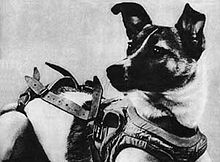CENTURY EGGS
Century eggs are made by preserving duck eggs in different mixtures containing ingredients such as clay, ash, salt, rice and lime, and left to cure for typically three months.
Century eggs are also known as Thousand Year Eggs, Hundred Year Eggs, or just Preserved Duck Eggs. Contrary to urban legend horse urine, or urine from any other animal is not used in the process of preserving the eggs. This most legend most likely stems from the eggs sometimes smelling like ammonia or sulfur.
Century eggs are a delicacy hailing from Hunan China, and date back to the Ming Dynasty. They were supposedly discovered by a man who found them preserved in a pool of slaked lime. Upon eating them, he found that they didn't taste half bad and decided to modify the ingredients and preserve more.
The yolk of a century egg ranges from a pasty green to black color, with an extremely creamy taste, and the white of the egg is a gel like brown color, tasting mostly just like a regular hard boiled egg. While they can be eaten alone, Century Eggs are usually a side dish or added to different porridges.
As for the medical benefits of Century Eggs, there is hardly any. There is little information on the benefits and risks of eating Century Eggs. However it is known that one egg has an estimated eight grams of protein, and also that they should not be eaten on a regular basis.
Note: It seems that the lack of nutritional information is due to that fact that Asian's (at least in my experience) pay less attention to the nutritional content of their food. Why would they? Other than foreign foods, and junk food, the majority of their food is quite healthy. And so is their lifestyle/eating habits. I know this is changing somewhat, but in comparison to America, where we have horrible food, and are obsessed with weight and health, Asia doesn't seem so extreme.
I just happen to have a work's cited! So here you go:
Works Cited
Calories in a Century Egg. My Fitness Pal.
http://www.myfitnesspal.com/food/calories/generic-century-egg-28910683
Century Eggs. Asian Pantry.
http://pantry.feastasia.com/century-eggs-preserved-duck-eggs/
Century Eggs. Philosophically Disturbed.
http://philosophicallydisturbed.wordpress.com/2011/04/21/century-eggs/
Century or Thousand Year old Eggs. The Chinese Soup Lady
http://www.thechinesesouplady.com/century-or-thousand-year-old-egg/
Century Eggs. Kok Robin.
http://kokrobin.wordpress.com/2008/05/02/century-eggs/
Preserved Duck Egg. Serious Eats.
http://www.seriouseats.com/2011/07/seriously-asian-preserved-duck-egg.html



